Despite all the uncertainty and change that 2020 brought, the reliable rhythms of the animal world brought me extra relief. The new year ahead promises a repeat of these simple, natural gifts and they are ours to receive every day. Here is what I look forward to on Cape Cod in the upcoming calendar year:
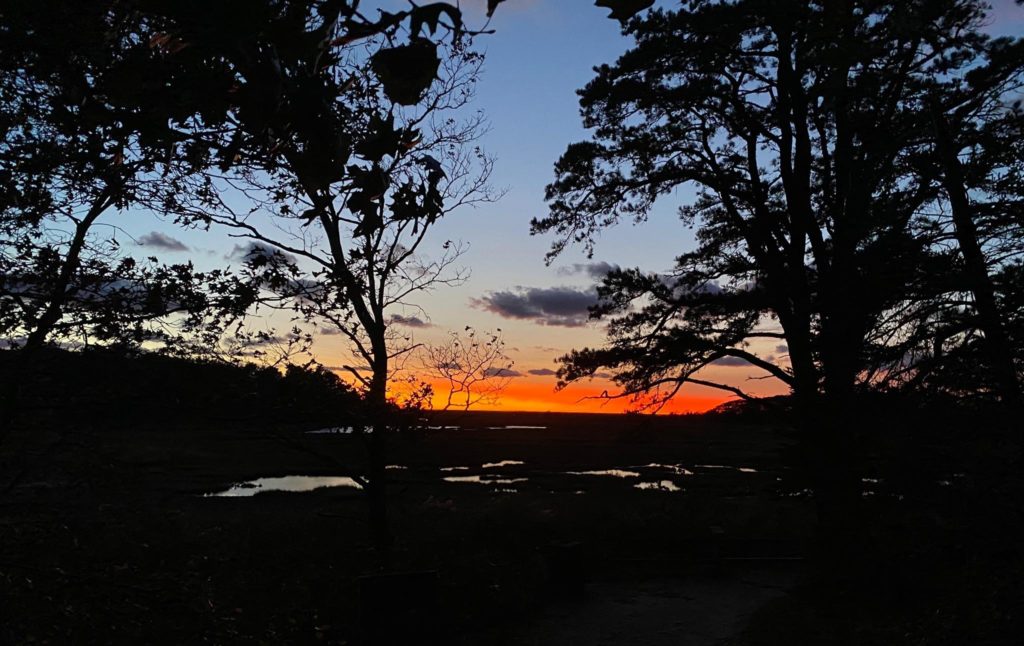
January / Full bird feeders
My backyard bird feeding station doesn’t attract anything rare, but that’s okay because it’s the regular and reliable visits from Black-capped Chickadees that I enjoy the most. They linger in the cedar tree above, checking out the scene, and then quickly drop in, grab a sunflower seed, and flit back to their branch to crack open their prize, or stash it under the cedar shakes of my barn.
February / The presence of animals revealed in snow
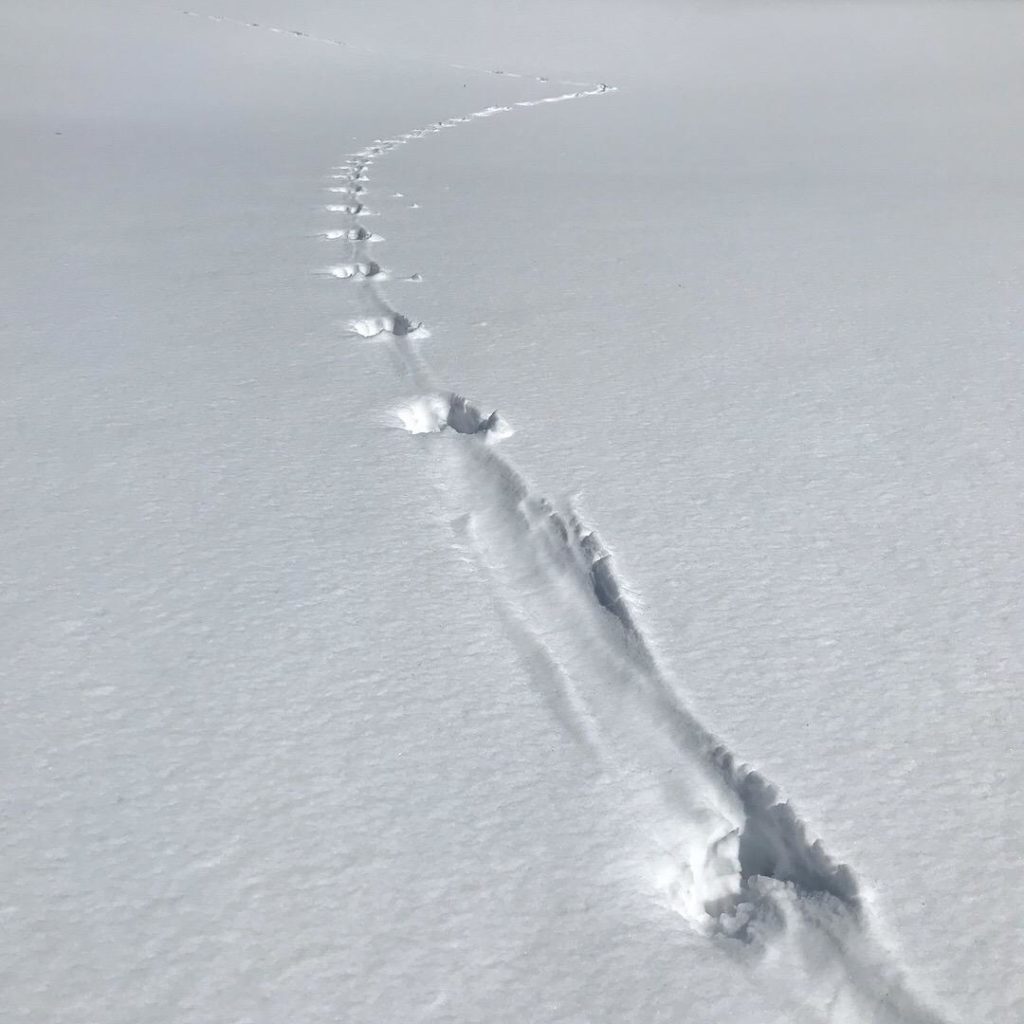
I love heading out after a snowstorm to look for animal tracks. The skies are often a bright blue and the gleaming, fresh snow offers the patterns of all sorts creatures that moved about in predawn hours. I especially love seeing signs of otter. Their bounding tracks interspersed with long belly slides seem joyful.
March / The anticipation of Ospreys
Uttering the phrase “Saw my first osprey of the year” really energizes me! One of Cape Cod’s harbingers of spring, they return around the middle of the month as the days get longer and the ponds free themselves of ice. Their commitment and fortitude is enviable as they brace against late winter snowstorms from atop their platforms, confident that brighter days are ahead.
April / Early emergence of spadefoot toads

Heavy spring rains at night spur the movements of frogs and toads to ephemeral pools and puddles where they announce themselves, often loudly, with mating chirps and trills. The chance of encountering the rare and elusive Eastern spadefoot toad, otherwise subterranean, is what encourages me to don rain gear and head out into the deluge. The warm cup of tea afterwards is nice too.
May / Horseshoes at tide’s edge

As water temperatures begin to warm in May, horseshoe crabs crawl closer to shore to spawn. One of my favorite memories is strolling along the beach at high tide, the calm waves gently lapping on shore, and watching the dark shapes of horseshoe crabs move at the water’s edge in search of one another. Their purpose so ancient and elemental.
June / Turtles all the way up
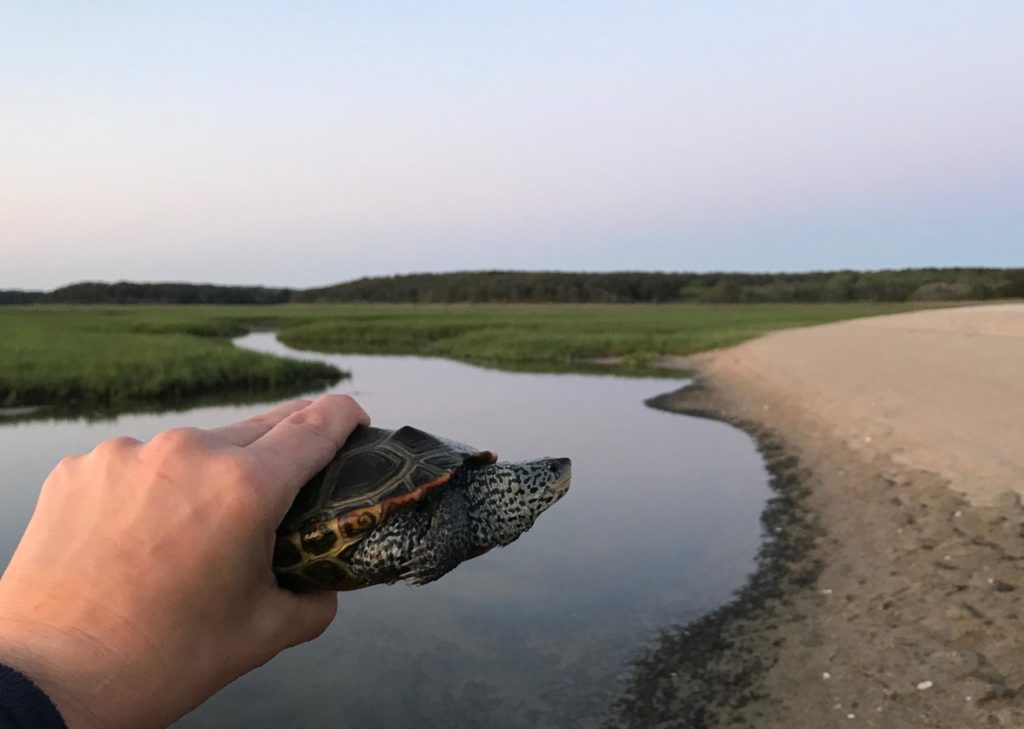
Without a doubt, June is all about turtles. It’s the start of nesting season and turtles are up and about, and sightings abound of snappers crossing the road; painted turtles leaving the pond; box turtles on the prowl; and diamondback terrapins seeking sandy spots. And for me, this month is also characterized by the passionate and dedicated people who volunteer to help these species thrive in our shared landscape. I enjoy watching their daily movements almost as much as seeing the turtles themselves. The volunteers are much easier to spot, anyway!
July / “Be balm”
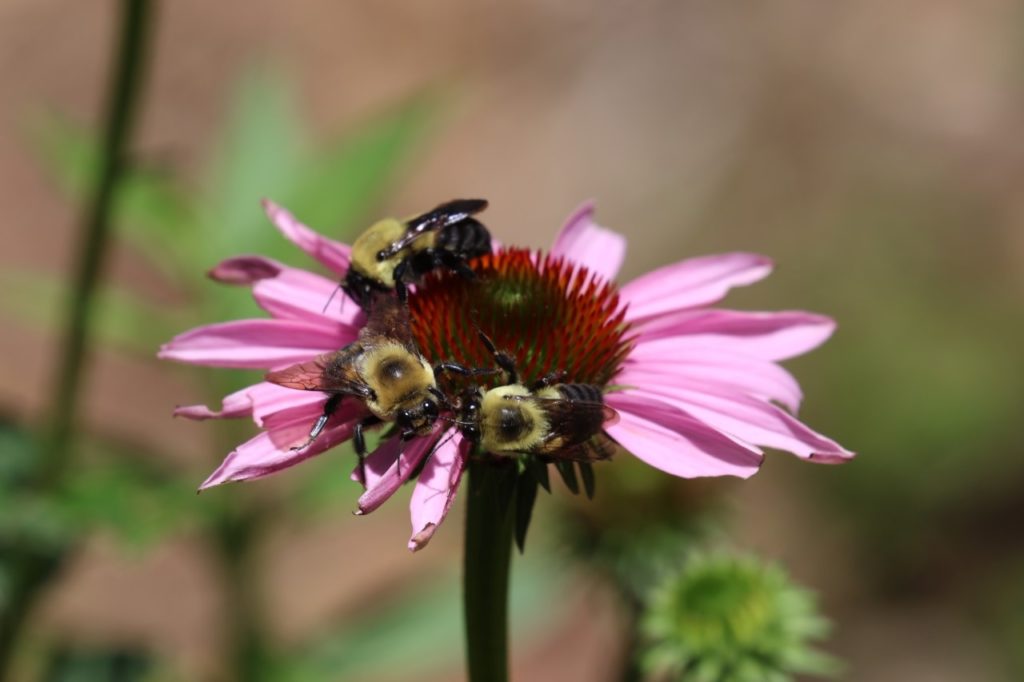
The flowers come alive with activity. Insects of all shapes and sizes fill the gardens. There are enormous red wasps probing the stiff burgundy cones of Echinacea; smaller, black wasps hang from bee balm’s fringed flowers; honey bees, bumble bees, and yellow jackets all vie for a spot on the purple spikes of catmint; cabbage whites chase one another from choice blossoms; and a single monarch lands on the butterfly weed. It’s easy to find reverie in the hum of summer when in the garden.
August / Bats
Walk a wooded edge at dusk and look up. Be patient and watch the breaks in tree canopy which are bright against the silouhetted trees. And there it is! A bat! It darts, dips, and twists so fast as it hunts insects. The Chiroptera’s flight is choreographed to the metallic sounds of late summer insects—crickets, grasshoppers, and katydids—and the flash of fireflies. I could watch this dance for hours.
September / Shorebirds
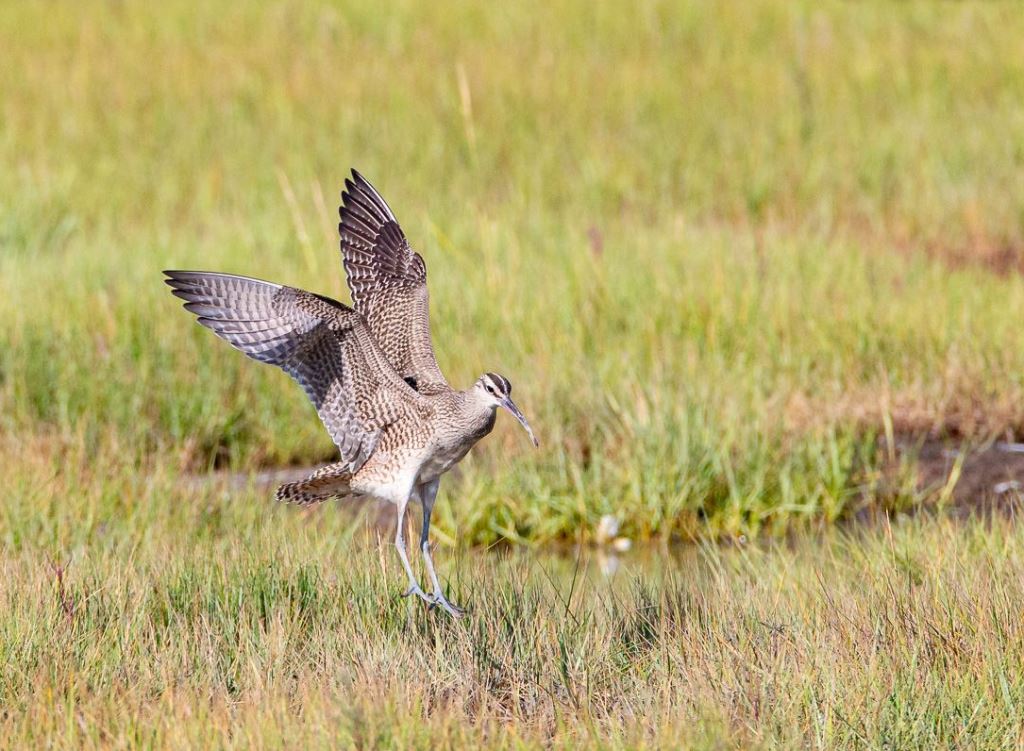
I’m not alone in a return to the beach post Labor Day. Shorebird migration is in full swing this time of year. Shorebirds of all kinds mingle together to probe the sand with their sensitive bills in search of worms, small bivalves, and other marine invertebrates. Least Sandpiper, Greater Yellowlegs, Semipalmated Sandpiper (not to be confused with the Semipalmated Plover), Short-billed Dowitcher, and Willets are among those who visit our coast as fuel up for their continued journeys. This mixed flock also quivers with chatter as they communicate with one another in soft call notes. Occasionally they are interrupted by the plaintive whistle of a Black-bellied Plover taking off in flight. I like to sit a while and listen.
October / Skeins of sea ducks
Mid-autumn brings back skeins of sea ducks in Cape Cod Bay. Massive flocks of Common Eiders move restlessly offshore, scoters raft up between the waves, and Red-breasted Mergansers hunt fish in the shallows. The Cape’s deep ponds also welcome ducks this time of year. I love seeing the black-and-white Buffleheads and Hooded Mergansers paddling around.
November / Sea Turtle Season

Water temperatures drop and north winds pick up, signaling the start of the sea turtle stranding season and rescue efforts. The first time I felt the flipper of a cold-stunned sea turtle it reminded me of what my cheeks felt like after being out sledding for hours in the clear nights of late winter. Soft yet impossibly cold. It’s amazing that many of these turtles, appearing lifeless and frozen, can be rehabilitated and released back into the wild. An incredible success story.
December / The courtship of owls

Step outside into the late afternoons or long nights of December and listen for the mellow hoots of Great-horned Owls drifting through the pines. This is their courtship season and a pairs’ duets are easy to pick out in an otherwise quiet time of year. The males have a deep hoot, the females slightly higher pitch. I love having them as company on night walks in the woods.
This post was contributed by Mass Audubon Cape Cod Sanctuaries director Melissa Lowe.


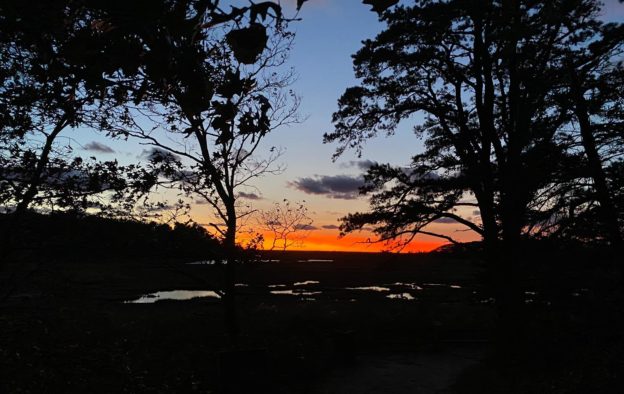
Thank you Melissa. Your deep appreciation for nature, your staff, volunteers, and our special bird, plant, and animal neighbors enriches all of our lives. Thank you for illuminating and carrying the bright light of Wellfleet Audubon Sanctuary forward through time – such a remarkable history and heritage to be proud of! You are the perfect leader for this chapter of the Sanctuary’s story.
Can’t decide which month I’m looking forward to most. You struck all the chords, Melissa.
Such a lovely message and reminder to look forward to and savor the unfolding of our beloved and spectacular natural world throughout the year.
Thank you for this beautifully expressed and vivid walk through the year.
It is a much needed tonic for 2021. Cheers!
Quite lovely! I’m looking forward to 2021
Melissa,
Your nature journey through the year is beautiful and made the start of my day wonderful! Thank you!!
Well done,Melissa.There is hope for 2021. Thank you.
Beautifully written! A wonderful way to welcome each month of the year.